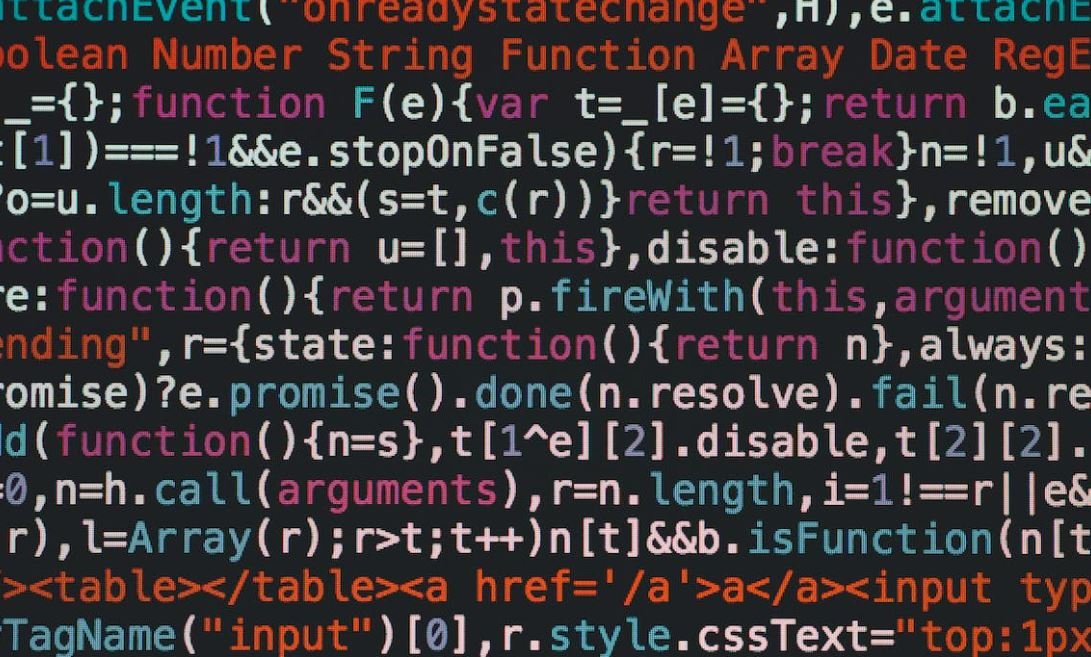Top AI Questions
Artificial Intelligence (AI) is a rapidly advancing field with countless applications and implications. As AI becomes increasingly integrated into our daily lives, it is natural for people to have questions about its capabilities, limitations, and impact on society. In this article, we aim to address some of the most frequently asked AI questions, providing informative and insightful answers to help you better understand this exciting technology.
Key Takeaways
- Artificial Intelligence (AI) is a rapidly advancing field with countless applications and implications.
- Understanding AI’s capabilities, limitations, and impact on society is important for all individuals.
- AI technology has the potential to greatly impact various industries, such as healthcare, finance, and transportation.
- There are ongoing ethical considerations and concerns surrounding AI, including privacy, bias, and job displacement.
- The future of AI holds promise, but its development should be guided by responsible and ethical practices.
What is Artificial Intelligence?
Artificial Intelligence refers to the ability of machines to replicate human-like intelligence, learning, and decision-making processes, allowing them to perform tasks that traditionally require human intelligence. AI systems are designed to perceive their environment, understand natural language, solve problems, and make informed decisions based on the available data.
**AI** has the potential to revolutionize entire industries by offering unprecedented efficiency, accuracy, and scalability. *Advancements in machine learning and deep learning techniques* are leading to AI systems capable of complex tasks such as facial recognition, voice assistants, autonomous vehicles, and medical diagnostics.
What are the Different Types of AI?
The field of AI can be broadly categorized into three types:
- Narrow or Weak AI: This type of AI is designed to perform specific tasks and operates within a limited domain. Examples include virtual assistants like Siri and Alexa.
- General or Strong AI: General AI refers to systems with human-level intelligence that can understand, learn, and perform any intellectual task that a human being can. This level of AI is still largely theoretical and its development remains a challenge.
- Superintelligent AI: Superintelligent AI surpasses human-level intelligence and has the ability to outperform humans in virtually every field. This level of AI is purely speculative and the subject of much debate and speculation.
*Strong AI*, or AGI (Artificial General Intelligence), poses both opportunities and risks as it raises concerns about control, ethics, and potential societal impact.
How is AI Used in Different Industries?
| Industry | AI Applications |
|---|---|
| Healthcare | Medical diagnostics, drug discovery, personalized medicine |
| Finance | Fraud detection, algorithmic trading, customer analytics |
| Transportation | Autonomous vehicles, traffic management, logistics optimization |
*AI technology* is being implemented across various industries to improve efficiency, enhance decision-making processes, and revolutionize the way businesses operate.
What are the Ethical Considerations with AI?
AI technology introduces a range of ethical considerations and concerns, including:
- Privacy and data protection: AI systems often require massive amounts of data, raising concerns about the security and privacy of personal information.
- Bias and fairness: AI algorithms can inherit and amplify biases present in the data they are trained on, leading to discriminatory outcomes.
- Job displacement: As AI systems automate tasks traditionally performed by humans, there are concerns about job loss and the need for re-skilling the workforce.
*It is crucial to address these ethical considerations and develop AI systems that are fair, transparent, and accountable* to ensure their responsible implementation for the benefit of society at large.
The Future and Responsible Development of AI
The future potential of AI is immense, with promising advancements on the horizon. Responsible development, addressing ethical concerns, and regulatory frameworks are integral to harnessing AI’s capabilities without compromising human values. By fostering collaboration between industry, academia, and policymakers, we can shape the path of AI development towards a more equitable and beneficial future.
| Statistic | Value |
|---|---|
| Global AI market size by 2027 | $733.7 billion |
| Percentage of companies using AI in at least one function | 37% |
| Number of AI-related job openings globally | 1.9 million |
AI is transforming the world we live in and holds tremendous potential for innovation and progress. By staying informed and understanding the implications of AI, we can navigate this changing landscape and harness its benefits while addressing the challenges that arise.
Sources:
- Bennett, T. M., et al. (2019). Artificial intelligence in operations. McKinsey & Company.
- Garcia, A. K. (2021). Seven ethical considerations with artificial intelligence. Forbes.
- Mathur, A., & Kundu, R. (2021). Artificial intelligence in the healthcare sector. Journal of Big Data, 8(1), 1-20.

Common Misconceptions
Artificial Intelligence (AI) is a complex and rapidly evolving field that has gained significant attention in recent years. However, there are several common misconceptions that people often have about AI. Let’s explore some of these misconceptions:
Misconception 1: AI can fully replicate human intelligence
Bullet points:
– AI systems can perform certain tasks with high efficiency, but they lack the holistic intelligence of humans.
– AI models are designed for specific purposes and have limited knowledge outside of their training data.
– While AI can mimic human behavior to some extent, it is incapable of experiencing emotions or consciousness.
Misconception 2: AI will replace human jobs entirely
Bullet points:
– While AI technologies may automate repetitive tasks, they also create new employment opportunities.
– Humans are needed to train, fine-tune, and verify the output of AI models.
– Many jobs require human skills such as creativity, critical thinking, and empathy, which AI currently cannot replicate.
Misconception 3: AI is always objective and unbiased
Bullet points:
– AI systems are influenced by the biases present in the data used to train them.
– The lack of diversity in datasets can lead to biases and discriminatory outcomes.
– Continuous monitoring and retraining of AI models are necessary to mitigate biases.
Misconception 4: AI is infallible and error-free
Bullet points:
– AI models can make mistakes, especially when encountering unfamiliar scenarios or outliers.
– The prediction and decision-making ability of AI systems heavily rely on the quality and relevance of the training data.
– Regular testing and evaluation are vital to identify and rectify errors in AI systems.
Misconception 5: AI poses an existential threat to humanity
Bullet points:
– Speculations about AI surpassing human intelligence and taking over the world are largely exaggerated.
– Proper regulation and ethical guidelines can ensure responsible use of AI technologies.
– The focus of AI research is to augment human capabilities and solve complex problems rather than replace humans.

AI Usage Across Industries
Artificial intelligence (AI) is rapidly transforming industries across the globe. This table highlights the adoption of AI in various sectors, showcasing the remarkable impact it has made.
| Sector | AI Implementation |
|---|---|
| Healthcare | AI-powered diagnostics systems for faster and more accurate medical diagnoses. |
| Finance | AI algorithms utilized for fraud detection and risk assessment in the financial sector. |
| Retail | Personalized shopping experiences driven by AI-powered recommendation systems. |
| Manufacturing | Automation of production lines through AI-driven robotics and machine learning. |
| Transportation | Self-driving cars and optimized route planning powered by AI algorithms. |
AI Research Institutions
The field of AI continues to advance through the dedicated efforts of leading research institutions. This table showcases some of the most renowned establishments contributing to AI research and innovation.
| Institution | Location |
|---|---|
| Massachusetts Institute of Technology (MIT) | United States |
| Stanford University | United States |
| University of Cambridge | United Kingdom |
| ETH Zurich | Switzerland |
| University of Tokyo | Japan |
AI in Popular Culture
Awareness of AI concepts and technologies has reached the general public through depictions in popular culture. This table highlights some well-known examples of AI representation in movies and literature.
| Medium | AI Representation |
|---|---|
| Movies | “Ex Machina” – An AI with human-like intelligence and emotions. |
| Literature | “I, Robot” – Collection of stories exploring the relationship between humans and AI. |
| Movies | “The Matrix” – AI-controlled virtual world enslaving humanity. |
| Literature | “Blade Runner” – Androids known as replicants indistinguishable from humans. |
| Movies | “Her” – A man’s romantic relationship with an AI-powered virtual assistant. |
AI Impact on Job Market
AI’s integration into the workforce has raised concerns about its potential impact on jobs. This table showcases the projected effects of AI implementation on different job categories.
| Job Category | Projected Impact |
|---|---|
| Manual Labor | Automation may lead to job displacement for repetitive physical tasks. |
| Creative Professions | AI can assist in generating ideas but unlikely to replace human creativity. |
| Customer Service | Chatbots and virtual assistants may reduce the need for human customer support agents. |
| Data Analysts | AI tools can augment data analysis, improving efficiency and decision-making. |
| Healthcare Practitioners | AI can support medical professionals in diagnoses, leading to better patient outcomes. |
AI Ethics and Challenges
The rapid development of AI technology poses ethical challenges. This table highlights some of the key ethical considerations and potential pitfalls associated with AI.
| Ethical Consideration | Potential Risks |
|---|---|
| Safety | Malfunctioning AI systems endangering human lives or causing accidents. |
| Privacy | Potential misuse of personal data collected by AI systems without consent. |
| Biases | AI systems reflecting and potentially amplifying societal biases. |
| Job Displacement | Mass unemployment due to AI automation replacing human workforce. |
| Autonomous Weapons | AI-powered weaponry capable of making independent lethal decisions. |
AI and Data Privacy Regulations
Regulations and policies are being developed to manage the use of AI and protect individuals’ privacy. This table provides an overview of notable data privacy regulations in relation to AI.
| Regulation | Key Provisions |
|---|---|
| General Data Protection Regulation (GDPR) | Provides individuals with control over their personal data and sets strict rules for AI-based decision-making. |
| California Consumer Privacy Act (CCPA) | Gives Californian consumers the right to know how their data is collected and shared, including AI-based profiling activities. |
| Personal Information Protection and Electronic Documents Act (PIPEDA) | Requires organizations obtaining consent for collecting, using, and disclosing personal information, including AI-based data processing. |
| ePrivacy Regulation | Focuses on electronic communications and addresses privacy risks associated with AI’s interaction with users’ online activities. |
| Data Protection Act 2018 (UK) | Imposes obligations on organizations collecting and using personal data, ensuring AI usage aligns with legal requirements. |
AI Adoption in Education
The education sector is exploring AI’s potential to transform teaching and learning methodologies. This table provides examples of AI applications in the field of education.
| Application | Description |
|---|---|
| Personalized Learning | Adaptive learning platforms tailor educational content to individual students’ needs and skills. |
| Intelligent Tutoring Systems | AI-powered virtual tutors providing personalized guidance, feedback, and support to students. |
| Automated Grading | AI algorithms capable of grading assignments, saving time for educators and providing faster feedback to students. |
| Smart Content Generation | AI systems capable of generating educational content, such as quizzes or study materials. |
| Virtual Reality (VR) | AI-enhanced VR experiences offering immersive and interactive learning environments. |
AI Limitations and Challenges
While AI boasts numerous advancements, it also possesses limitations and hurdles that impede its complete realization. This table explores some of the primary challenges in the field of AI.
| Challenge | Description |
|---|---|
| Lack of Common Sense | AI struggles to possess or understand common-sense knowledge, impacting its decision-making capabilities in certain situations. |
| Data Bias | AI systems trained on biased datasets may perpetuate and amplify existing prejudices or inequalities. |
| Interpretability | Complex AI systems often lack transparency, making it challenging to understand and explain their decision-making processes. |
| Ethical Dilemmas | AI frequently presents ethical dilemmas, such as making decisions regarding potential harm or privacy breaches. |
| Security Risks | AI systems can be vulnerable to malicious attacks or exploitation, posing security risks to individuals and organizations. |
Artificial intelligence has rapidly evolved across numerous industries, offering transformative possibilities and captivating the public’s imagination. From healthcare to popular culture, AI’s impact is ubiquitous and expanding. While AI brings remarkable benefits, it also raises ethical concerns, challenges the job market, and demands careful regulation. As the field progresses, addressing limitations and fostering responsible AI development becomes crucial to harness its full potential while ensuring a safe and inclusive future.
Frequently Asked Questions
Top AI Questions




